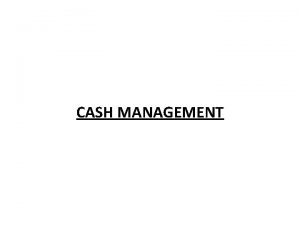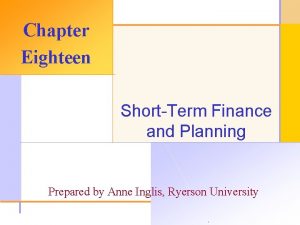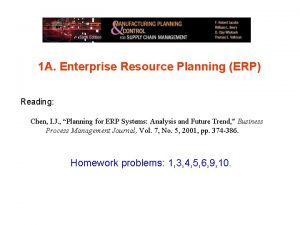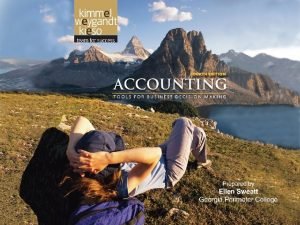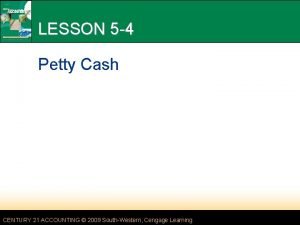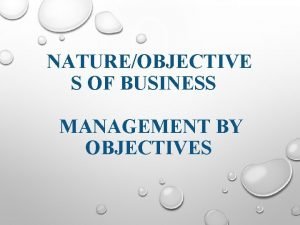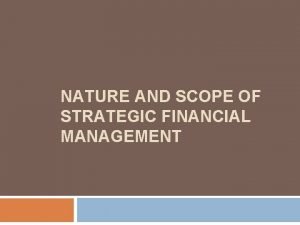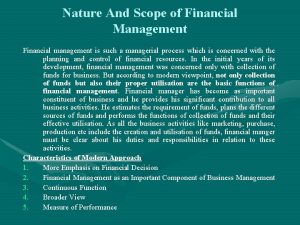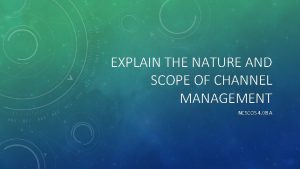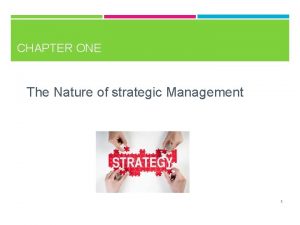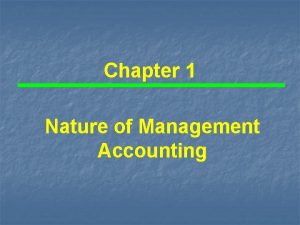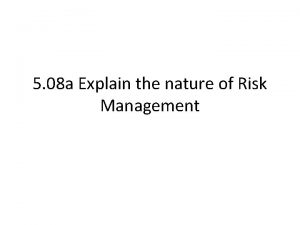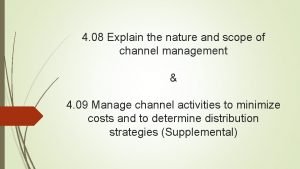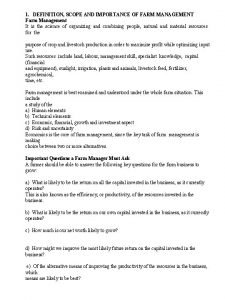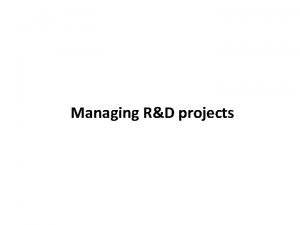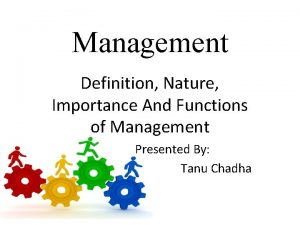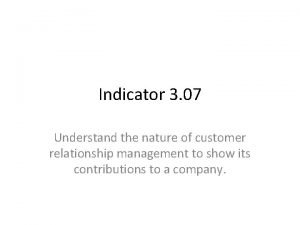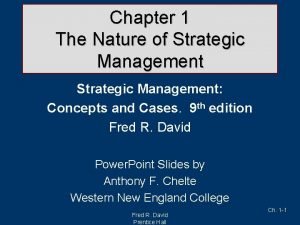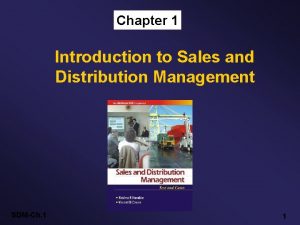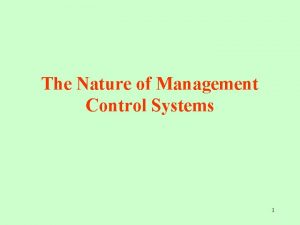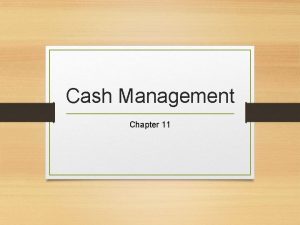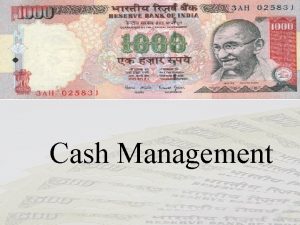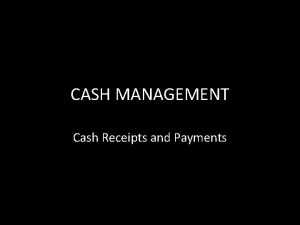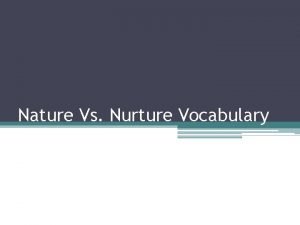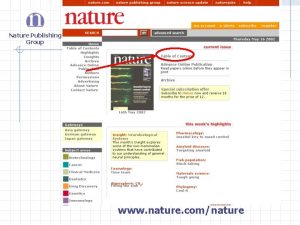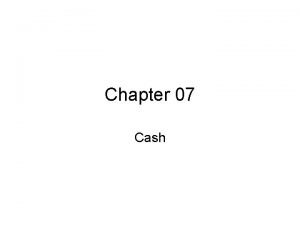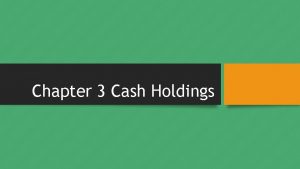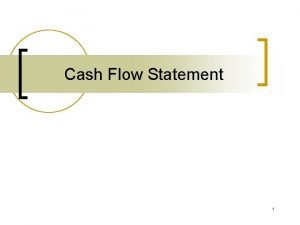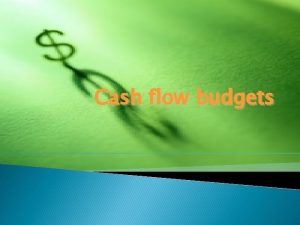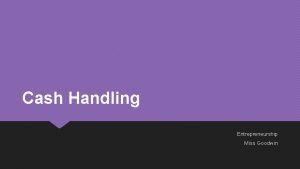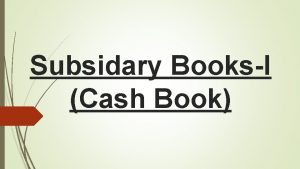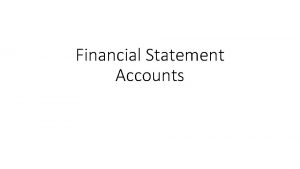CASH MANAGEMENT NATURE OF CASH In cash management

























- Slides: 25

CASH MANAGEMENT

NATURE OF CASH Ø In cash management the term cash has been used in two senses: - § Narrow Sense: Under this cash covers currency and generally accepted equivalents of cash, viz. , cheques, demand drafts and banks demand deposits. § Broad Sense: Here, cash includes not only the above stated but also near cash assets. There are Bank’s time deposits and marketable securities.

MOTIVES FOR HOLDING CASH J M Keynes identified three possible motives for holding cash : • Transaction motive • Precautionary motive • Speculative motive

Objectives of Cash Management • To meet Cash Payments To quote Bollen, ”Cash is an oil to lubricate the ever turning wheels of business: without it , the process grinds to a stop”. • To maintain Minimum Cash Balance (Reserve)

Features of Cash Management • Cash Planning (estimate Cash Surplus/ Deficit through Cash Budget) • Cash Flows Management (Cash Inflows & Cash Outflows) • Determination of Optimum Cash Balance (cost of excess cash and danger of cash deficiency will match) • Investment of Surplus Cash (properly invested in marketable securities, to earn profits)

Factors Determining Cash Needs • Synchronization of Cash Flows • Short Costs (Cost of Transaction, Cost of Borrowing, Cost of Deterioration of the Credit Rating, Cost of Loss of Cash Discount, Cost of Penalty Rates) • Surplus Cash Balance Costs • Management Cost

CASH BUDGET The principal method of cash budgeting is the receipts and disbursements method. Under this method, the cash forecast shows the timing and magnitude of cash receipts and disbursements over the forecast period. .

Inflows/Cash Receipts Outflows/Disbursements Cash sales Accounts payable/Payable payments Collection of accounts receivable Purchase of raw materials Disposal of fixed assets Wages and salary (payroll) Factory expenses Administrative and selling expenses Maintenance expenses Purchase of fixed assets

Cash Budget - Example The following information about WBA Ltd is given: • The estimated sales for the period January 2010 through June 2010 are as follows: Rs. 100, 000 a month from January through March and Rs. 120, 000 a month from April through June. • The sales for November and December of the previous year have been Rs. 100, 000 each. • Cash and credit sales are expected to be 20 percent and 80 percent respectively. • The receivables from credit sales are expected to be collected as follows: 50 percent after one month and the balance 50 percent after two months. • Other anticipated receipts are: Rs. 5, 000 from the sale of a machine in March and Rs. 2000 interest on securities in June

CASH BUDGETING January 1. Sales February March April May June 100, 000 2. Credit sales 80, 000 96, 000 3. Collection of accounts receivables 80, 000 88, 000 96, 000 4. Cash sales 20, 000 24, 000 5. Receipt from machine sale 6. Interest Total cash receipts (3+4+5+6) 100, 000 120, 000 5, 000 2, 000 100, 000 105, 000 104, 000 112, 000 122, 000

CASH BUDGETING Relevant information for cash payments · ASD Inc. plans to purchase materials worth Rs. 40, 000 in January and February and materials worth Rs. 48, 000 each month from March through June. Payments will be made a month after the purchase · A payment of Rs. 40000 will be made in January for purchases in the previous December · Miscellaneous cash purchases of Rs. 2000 per month are planned from January through June · Wage payments will be Rs. 15000 per month, January through June · Payments for manufacturing expenses will be Rs. 20, 000 per month and for general administrative expenses will be Rs. 10, 000 per month, January through June · Dividend payment of Rs. 20, 000 and a tax payment of Rs. 20, 000 are planned for June · A machine will be bought in cash for Rs. 50, 000 in March

CASH BUDGETING 1. Material purchases 2. Credit material purchases 3. Payment of accounts payable 4. Miscellaneous cash purchases 5. Wages 6. Manufacturing exp. 7. General admn. expense 8. Dividend 9. Tax 10. Capital expenditure Total payments (3+4+5+6+7+8+9+10) January February March April 40, 000 48, 000 40, 000 48, 000 40, 000 48, 000 2, 000 May June 48, 000 2, 000 15, 000 15, 000 20, 000 20, 000 10, 000 - 10, 000 50, 000 10, 000 - - 10, 000 20, 000 87, 000 137, 000 95, 000 135, 000 87, 000 2, 000

CASH BUDGETING Assuming that the cash balance on 1 st January is Rs. 22, 000 and the minimum cash balance required by the firm is Rs. 20, 000, the summary cash forecast is given below. January 1. Opening cash balance 2. Receipts 3. Payments 4. Net cash flow (2 – 3) February 100, 000 87, 000 13, 000 26, 000 6. Opening cash balance + Cumulative net flow (1 + 5) 35, 000 48, 000 8. Surplus or deficit in relation to the minimum cash balance required (6 – 7) April May June Rs. 22, 000 5. Cumulative net cash flow 7. Minimum cash balance required March 105, 000 104, 000 112, 000 122, 000 137, 000 (32, 000) (6, 000) 16, 000 20, 000 15, 000 28, 000 (4, 000) 95, 000 9, 000 3, 000 25, 000 95, 000 135, 000 17, 000 (13, 000) 20, 000 42, 000 7, 000 29, 000 20, 000 5, 000 22, 000 9, 000

FLOAT • The cash balance shown by a firm on its books is called the book, or ledger, balance whereas the balance shown in its bank account is called the available, or collected, balance. The difference between the available balance and the ledger balance is referred to as float. • There are two kinds of float : disbursement float - cheque issued but not debited in the customer’s A/c payment float- cheque deposited but not credited in the customer’s A/c

SELECTING INVESTING (AVENUES ) SECURITIES • Safety ( getting back the Principal Amount Originally Invested) • Marketability ( Owner’s ability to convert the securities in to cash on short notice) • Yield ( interest and appreciation of the principal amount invested) • Maturity ( time over which interest and principal are to be paid)

CASH MANAGEMENT MODELS Several cash management models have addressed this issue of split between marketable securities and cash holdings. Two such models are : • Baumol model • Miller and Orr model

BAUMOL MODEL • Provides for Cost efficient transactional balances • Assumes that the demand for cash can be predicted with certainty • determines the optimal conversion size/lot • focus of the model is to minimise the total cost • associated with cash management • comprising total conversion costs (that is, costs incurred each time marketable securities are converted into cash) and the opportunity cost of keeping idle cash balances which otherwise could have been invested in marketable securities

OPTIMAL CASH BALANCE Total costs Opportunity cost Costs • C* Transaction cost Cash balance

BAUMOL MODEL ECL= where: 2 CF O ECL = Economic Conversion lot or Optimum Cash Balance C = Cost per conversion F = Projected cash requirements during the planning period O= interest rate per planning period on investment in marketable securities

BAUMOL MODEL-Example • V ltd. ’s estimated cash need for the year are Rs. 20 Lakhs. Cost of transaction is Rs. 2000/lot & the opportunity cost is 20%. Calculate Economic Conversion Lot? Here, C= Rs. 2000, F= Rs. 20 Lakhs & O= 20% or 0. 20 EOL= 2 x 2000 x 20 lakhs = Rs. 2 Lakhs 0. 20

MILLER & ORR MODEL • Provides for cost-efficient transactional balances • assumes uncertain cash flows • determines an upper limit and return point for cash balances. • Objective of Model is to determine the optimum cash balance level which minimises the cost of cash management

MILLER AND ORR MODEL 3 b 2 RP = 3 + LL 4 I UL = 3 RP – 2 LL where: RP = return point b = fixed cost per order for converting marketable securities into cash. I = daily interest rate earned on marketable securities 2 = variance of daily changes in the expected cash balance LL = the lower control limit UL = the upper control limit

MILLER AND ORR MODEL- Example • X Ltd. has a policy of maintaining a minimum cash balance of Rs. 500, 000. The standard deviation of the company’s daily cash flows is Rs. 200, 000 & the annual interest rate is 14%. The transaction cost of buying or selling securities is Rs. 150 per transaction. Calculate X Ltd. ’s return point & upper control limit? Return point = 3 3 x 150 x 200, 000 + 500, 000 4 x 0. 14 365 = Rs. 727, 227 Upper Control Limit = 3 RP – 2 LL= 3 x 727, 227 – 2 x 500, 000 = Rs. 16, 81, 681

MONEY MARKET INSTRUMENTS OR MARKETABLE SECURITIES • Mutual fund scheme (Money market schemes) • Treasury bills • Commercial paper • Certificates of deposit • Inter-corporate deposits (Call deposits, 3 months and 6 months deposits) • Ready Forward • Bill discounting

• TREASURY BILLS – Obligations of the Govt. , short term period< 1 year (91 or 182 or 364 days), sold at discount & redeemed at face value. The are easily transferable, highly liquid & risk free. • COMMERCIAL PAPERS (CPs) – Short term (minimum period is 15 days to a maximum of 1 year, unsecured promissory notes issued by large comp. ’s. Issued in denomination of Rs. 5 lakhs or multiple thereof
 Miller orr model formula
Miller orr model formula Nature and nature's law lay hid in night
Nature and nature's law lay hid in night Determinace lidské psychiky
Determinace lidské psychiky Cash to cash cycle time
Cash to cash cycle time Cash to cash cycle time
Cash to cash cycle time What is cash in and cash out
What is cash in and cash out Raw materials budget example
Raw materials budget example Paid cash to replenish the petty cash fund
Paid cash to replenish the petty cash fund Part six recording bank and petty cash transactions answers
Part six recording bank and petty cash transactions answers Advantage of mbo
Advantage of mbo Strategic financial management outlook is what in nature
Strategic financial management outlook is what in nature Features of modern approach to financial management
Features of modern approach to financial management Management accounting nature
Management accounting nature What is channel management decisions
What is channel management decisions Strategic management chapter 1
Strategic management chapter 1 Nature of management accounting
Nature of management accounting Risk retrospective
Risk retrospective Nature and scope of channel management
Nature and scope of channel management Nature and scope of farm management slideshare
Nature and scope of farm management slideshare Changing nature of r&d management
Changing nature of r&d management Nature of management science
Nature of management science Nature of customer relationship management
Nature of customer relationship management Nature of strategic management
Nature of strategic management Meaning of risk
Meaning of risk Nature and importance of sales management
Nature and importance of sales management Nature of management control system
Nature of management control system
